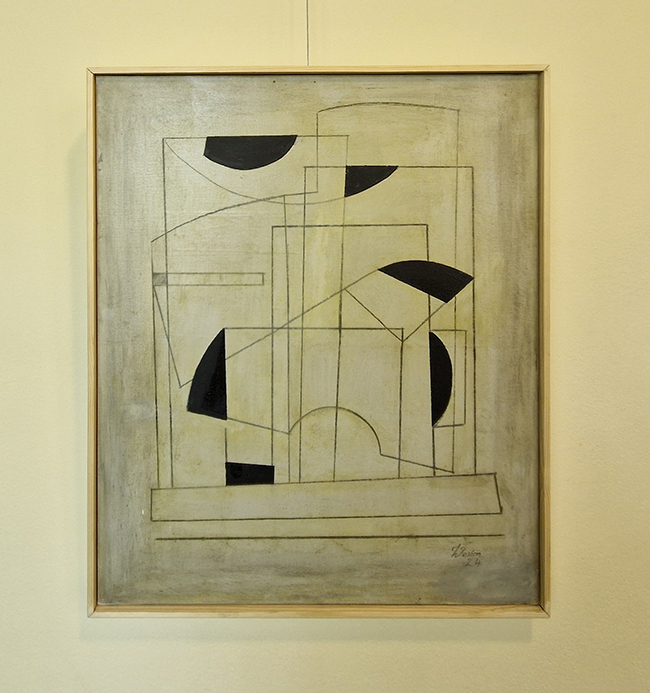Blake Weston, a painter born in Newport, Wales, has an educational and artistic background. He studied Fine Art at GNVQ level in The Forest of Dean in Gloucestershire, then at Cardiff University, where he initially specialized in Time-Based Art under the guidance of Andre Stitt before returning to painting in his final year. Blake is currently preparing to pursue an MA in Fine Art. His artistic process focuses on exploring the purpose of painting itself, rather than striving for perfection. He aims to make his work accessible and visually engaging, similar to how a good musical composition is full of hooks. His interest in Abstract forms developed through his experiences working in theatre in Finland and Russia as a set builder and training as a welder. For Blake, painting is about posing questions rather than providing clear answers, reflecting his ongoing search for something elusive and perhaps unattainable.

Blake’s work, particularly his piece titled “Windmill,” epitomizes his approach to abstract art. “Windmill,” created using acrylic and oils on canvas, is more than just a visual representation; it is a symbol of transformation. The windmill in his painting signifies the shift from one dynamic state to another, a metaphor for moving from one level of consciousness to a higher one. This transformation is not just about physical change but also about spiritual and mental growth. The windmill stands as a symbol of life, serenity, resilience, self-sufficiency, and perseverance, especially in harsh environments. It reminds us of the need to adapt and find balance amidst the winds of change.
Blake’s artistic journey is a fascinating blend of various influences and experiences. His time working in theatre as a set builder in Finland and Russia exposed him to different forms of art and craftsmanship, which significantly influenced his abstract style. His training as a welder introduced him to the world of metal and structure, allowing him to see the potential in abstract forms to tell a story. This diverse background gives his paintings a unique depth, where each piece is a blend of his experiences and explorations.
In creating his abstract works, Blake does not seek to provide overt statements or narrative pointers. Instead, his paintings pose a series of questions, inviting viewers to engage with the work on a deeper level. This approach aligns with his belief that there is no joy or satisfaction in providing clear answers. For Blake, the artistic process is about showing his search for something that he hopes he might never find. This continuous search keeps his work dynamic and ever-evolving, much like the windmill’s constant movement.
Blake’s dedication to making his art accessible is evident in the way he composes his paintings. He aims for his work to be easily digested by the eye, much like a catchy tune in a song. This accessibility does not mean simplicity; rather, it means that his work can be appreciated on multiple levels. At first glance, the viewer might be drawn in by the vibrant colors and dynamic forms, but a closer look reveals deeper meanings and questions embedded in the abstract shapes.
His painting “Windmill” embodies this approach. On the surface, it might seem like a simple representation of a windmill, but a closer inspection reveals the layers of meaning Blake has infused into the work. The windmill, originally designed to grind grain, transforms into a powerful symbol of change and resilience. It stands tall amidst the winds of change, adapting and finding balance, much like how individuals must navigate the challenges of life.
Blake’s work resonates with those who appreciate art that engages both the eye and the mind. His abstract forms are not just visually striking but also intellectually stimulating, posing questions that invite contemplation. This combination of accessibility and depth makes his art appealing to a wide audience.
Blake’s dedication to exploring the purpose of painting and his refusal to settle for easy answers ensure that his art remains fresh and thought-provoking. Each piece he creates is a part of his ongoing search, a journey that he shares with his audience through his abstract forms.
In conclusion, Blake Weston’s art is a testament to the power of abstract forms to convey complex ideas and emotions. His painting “Windmill” exemplifies his ability to blend visual appeal with deeper meanings, creating works that are both accessible and profound. As he continues his artistic journey, Blake’s work promises to pose new questions and invite viewers to join him in his search for understanding and meaning.

